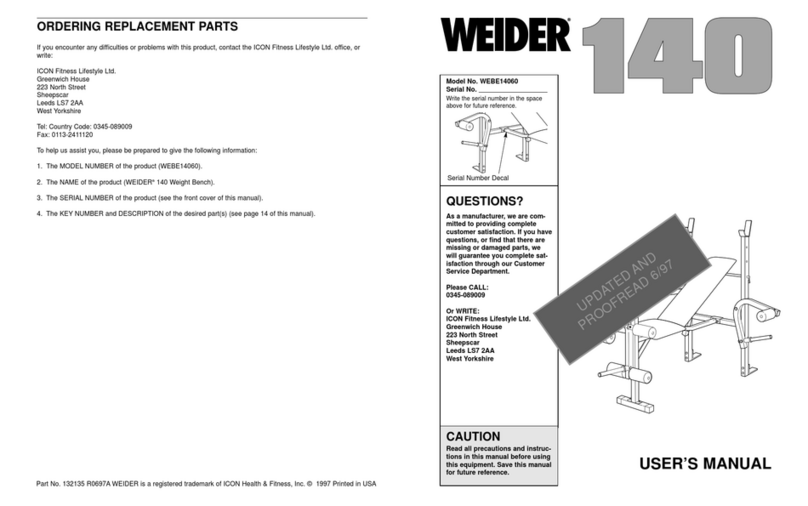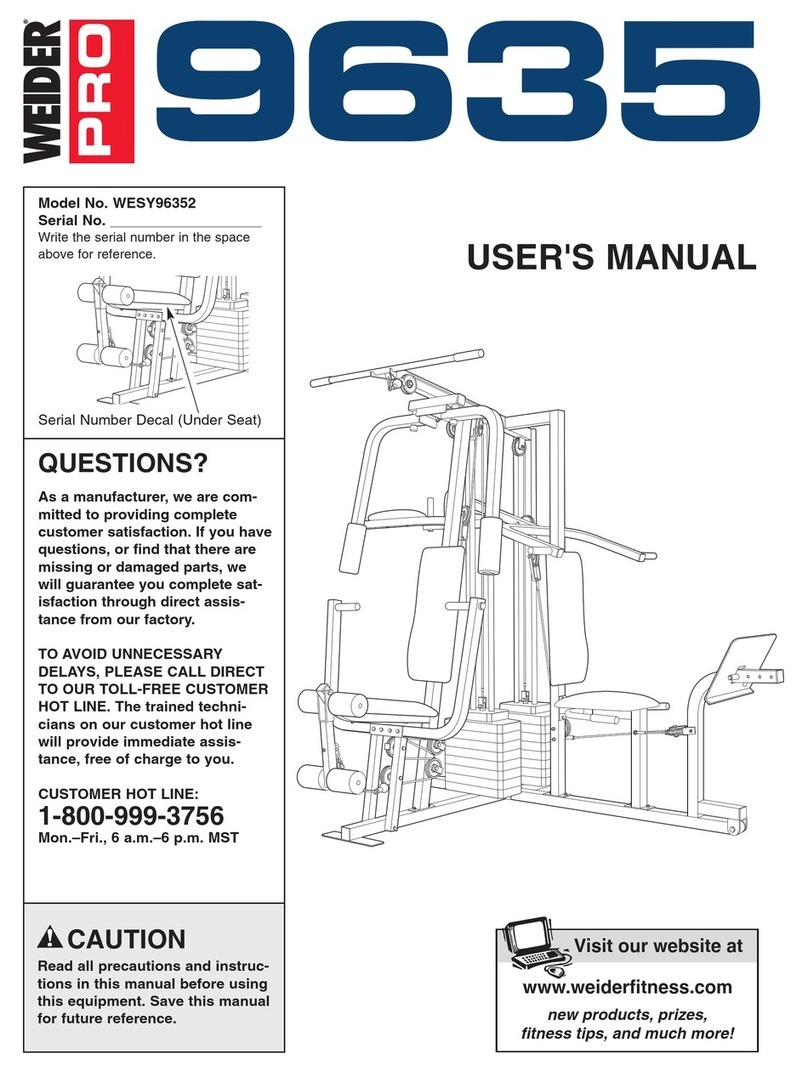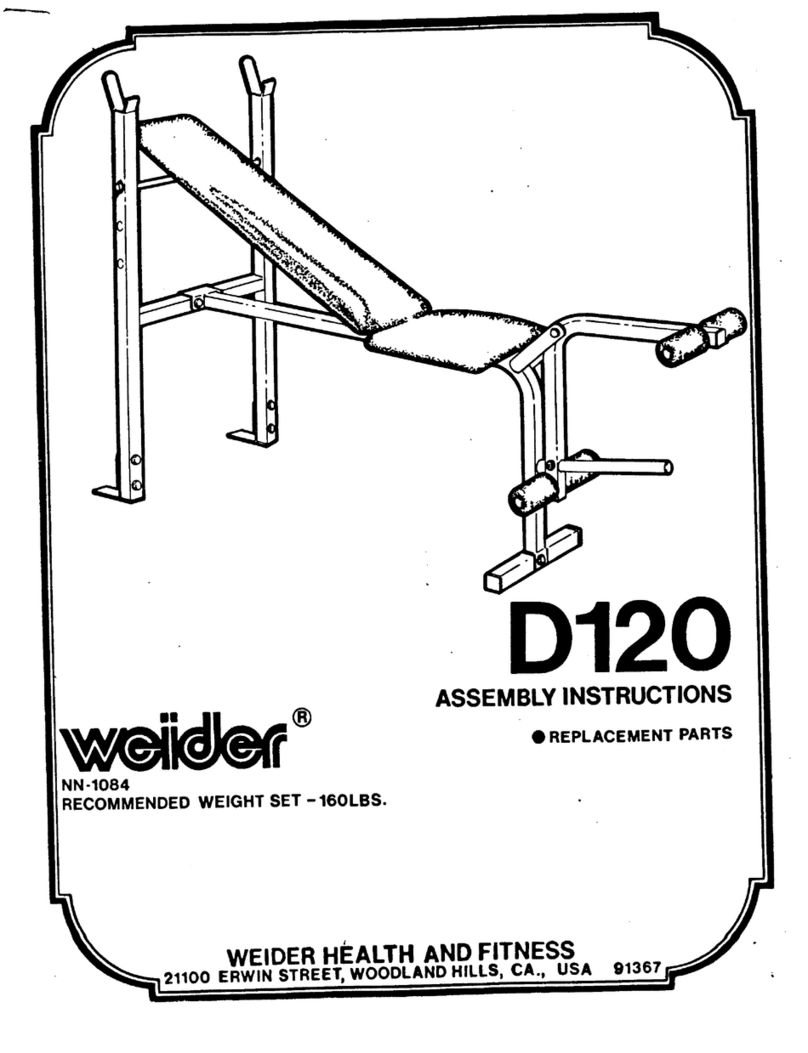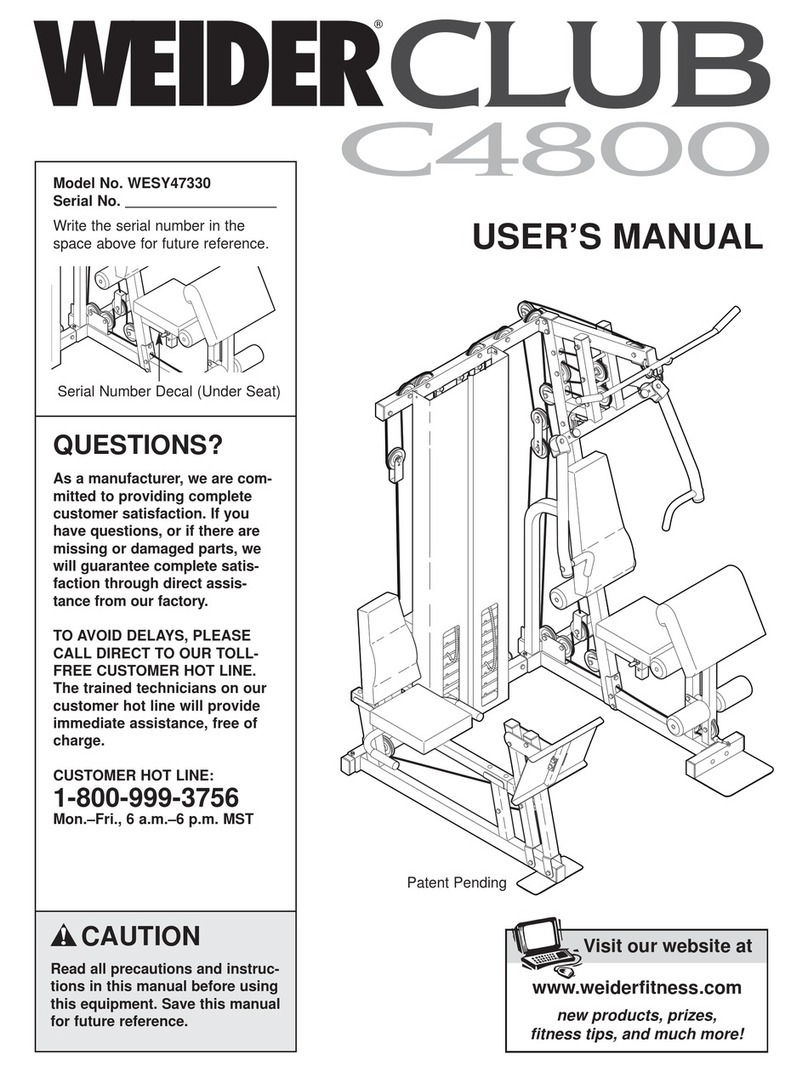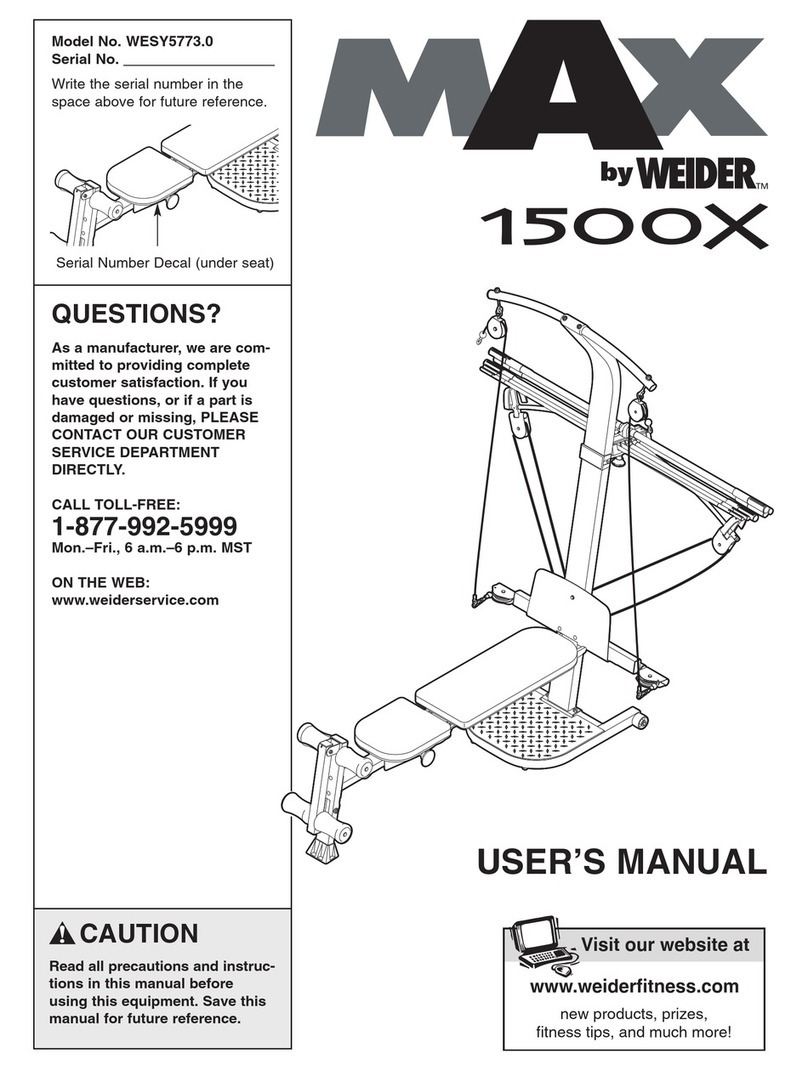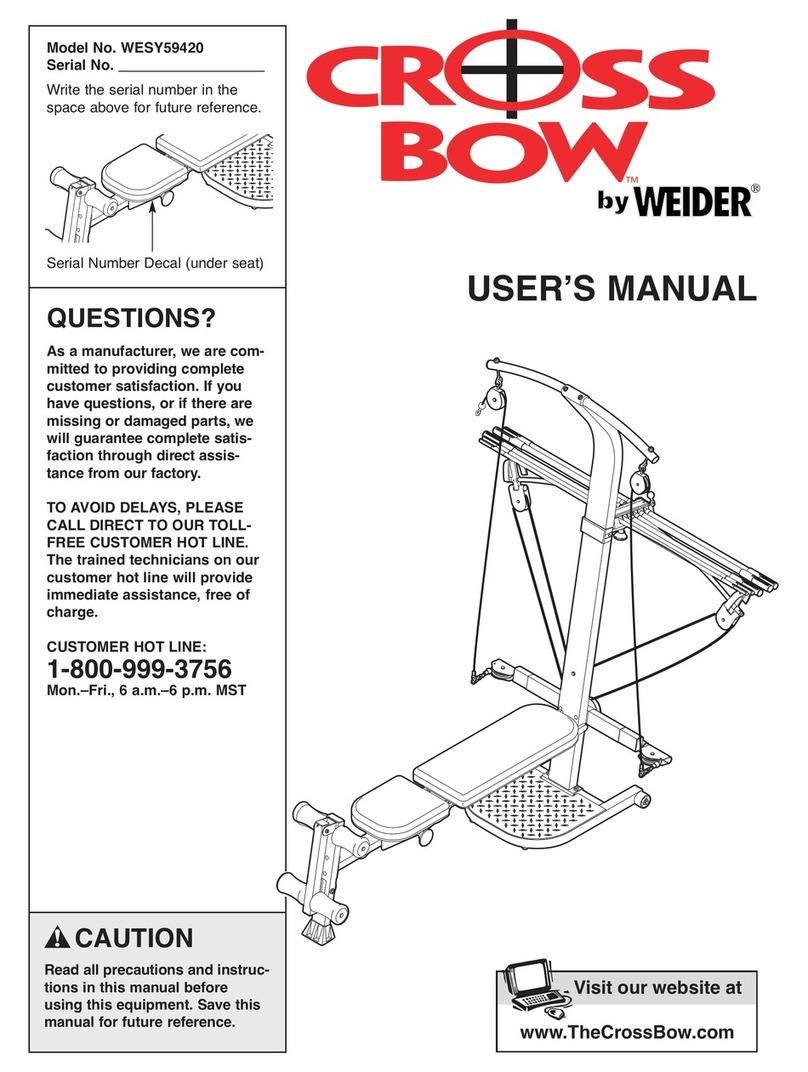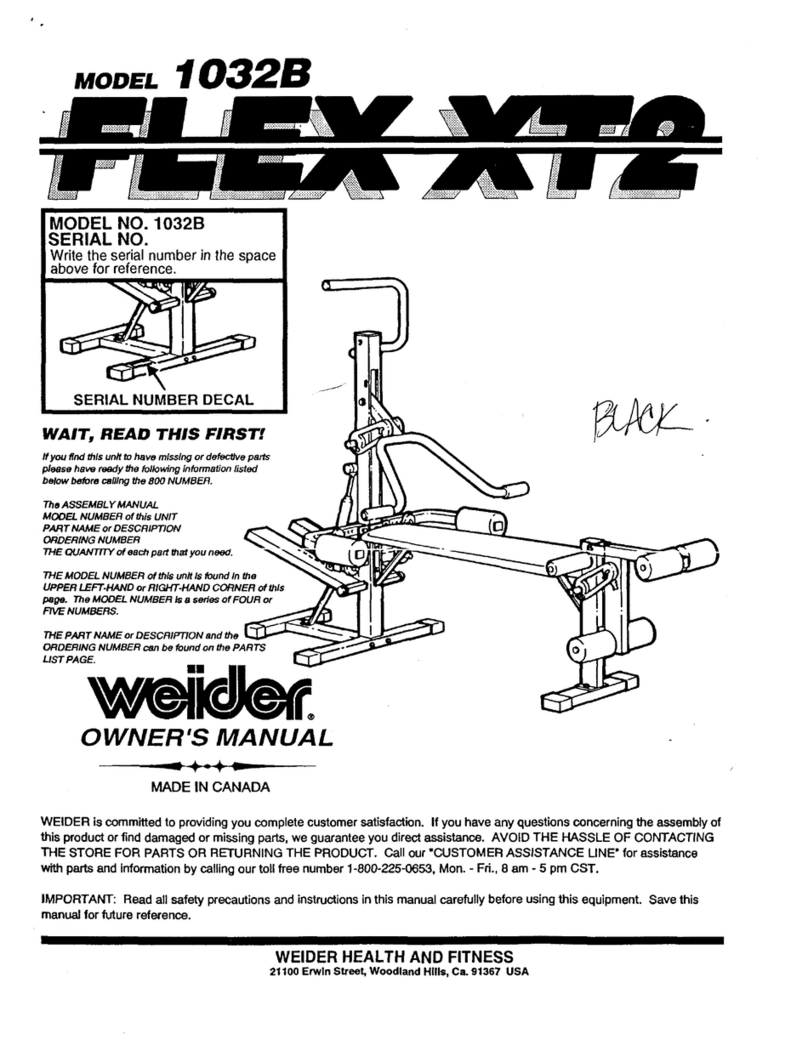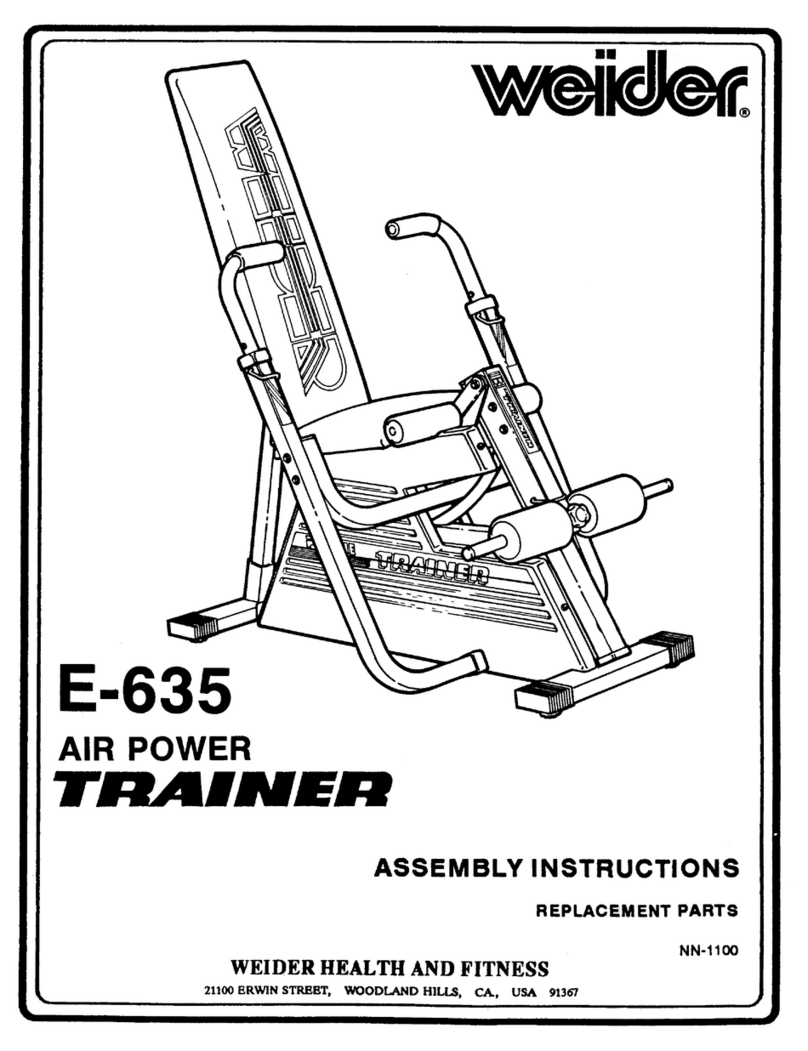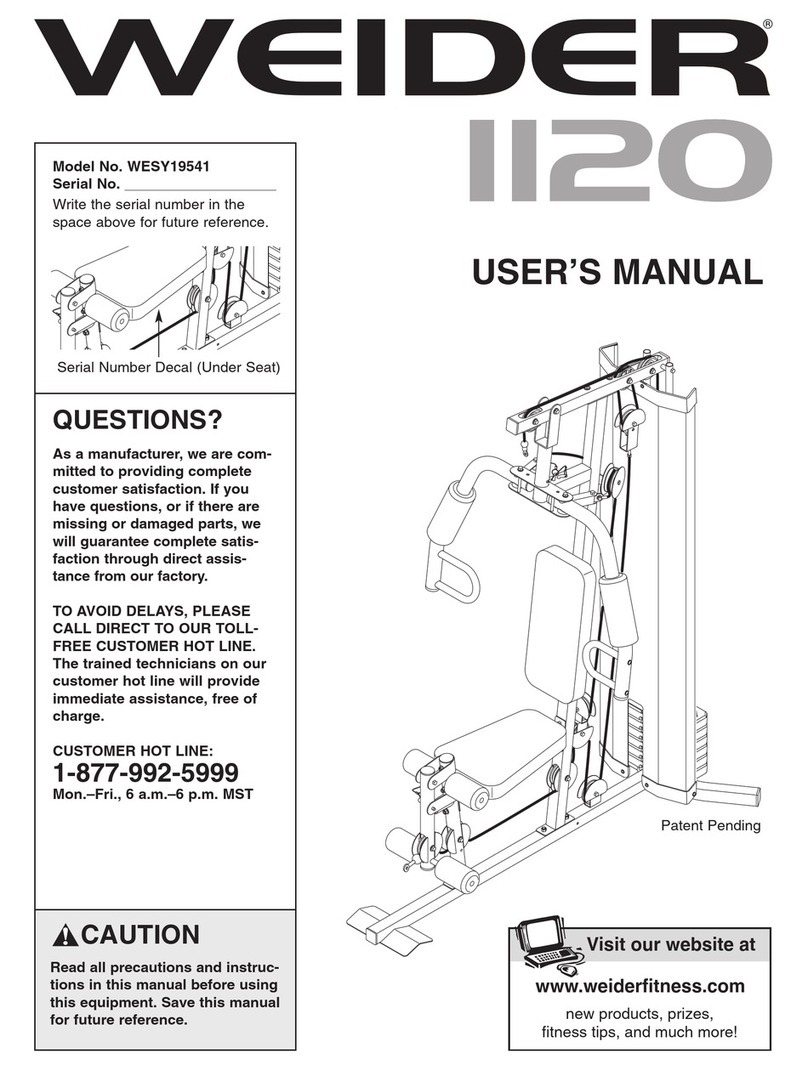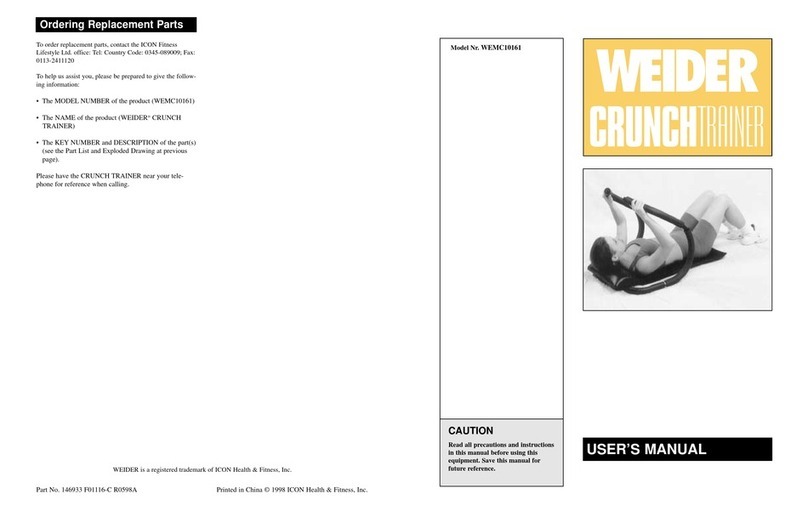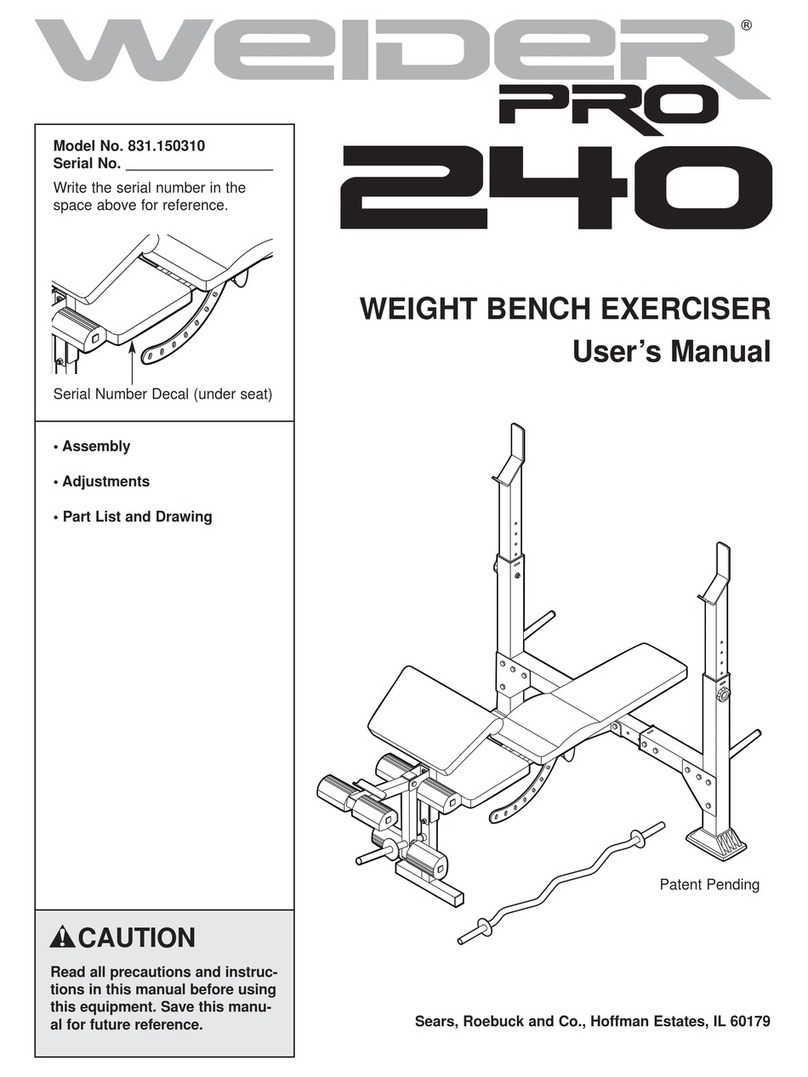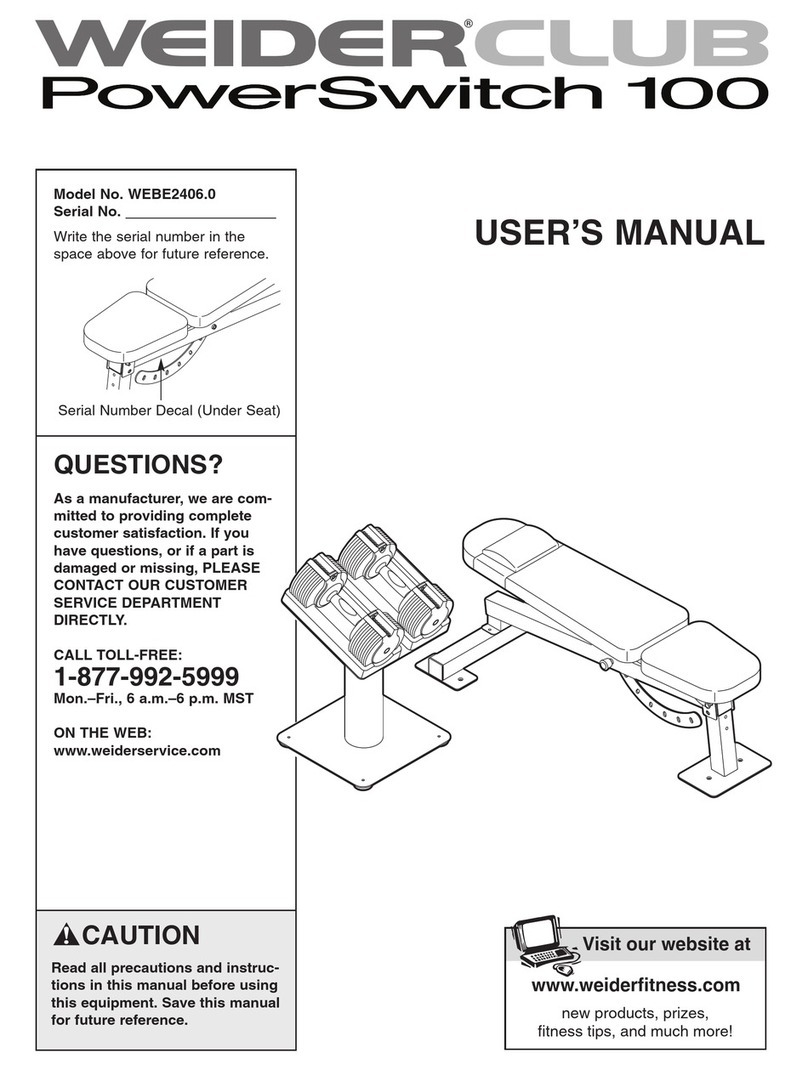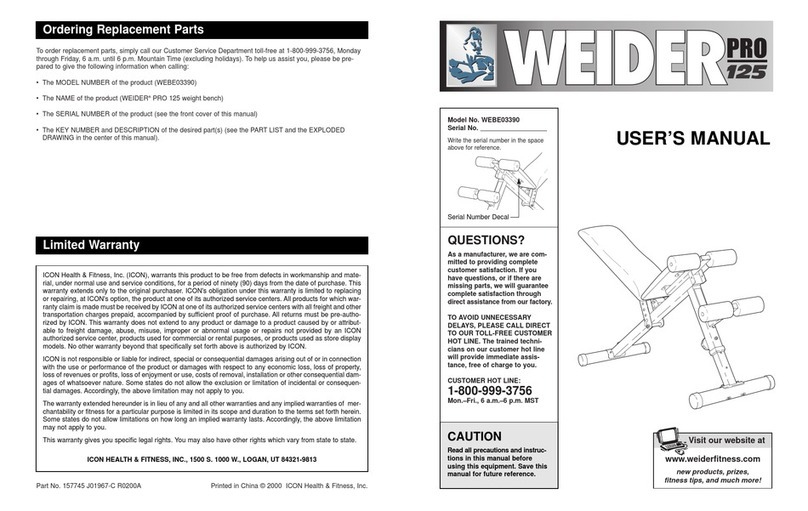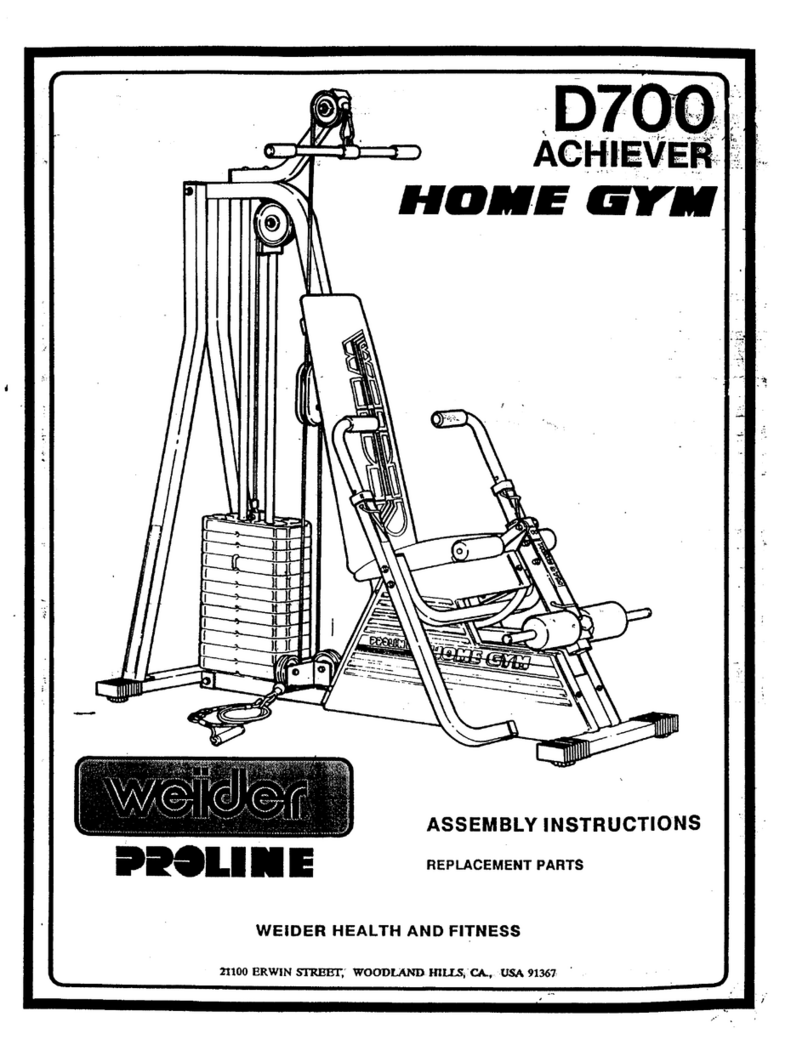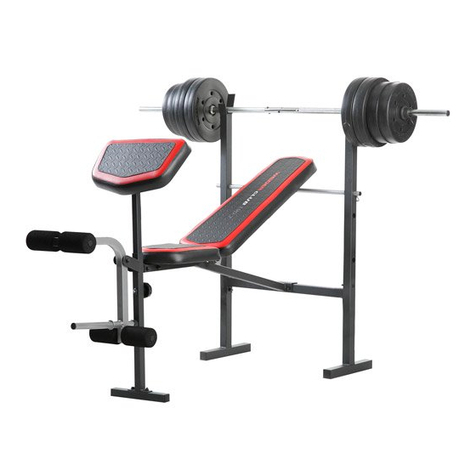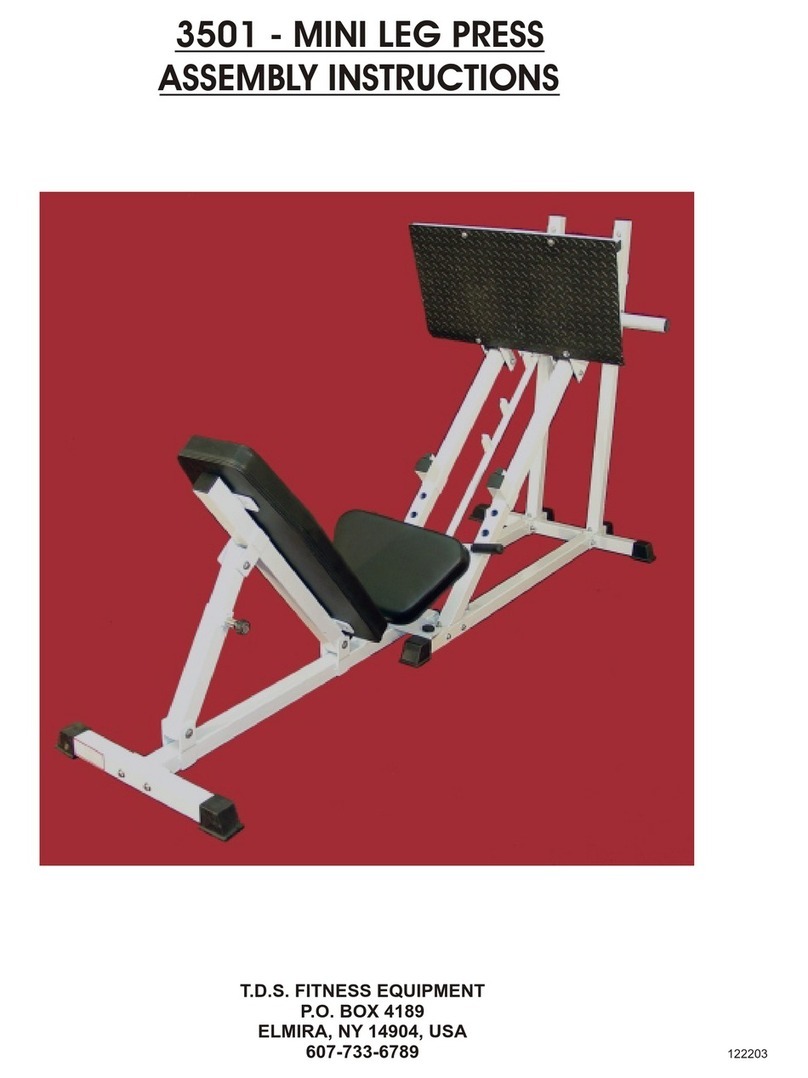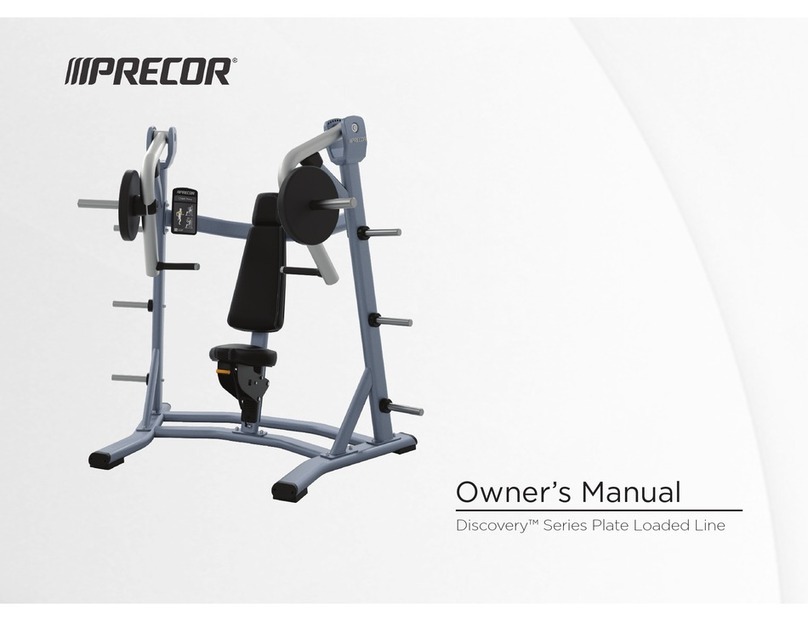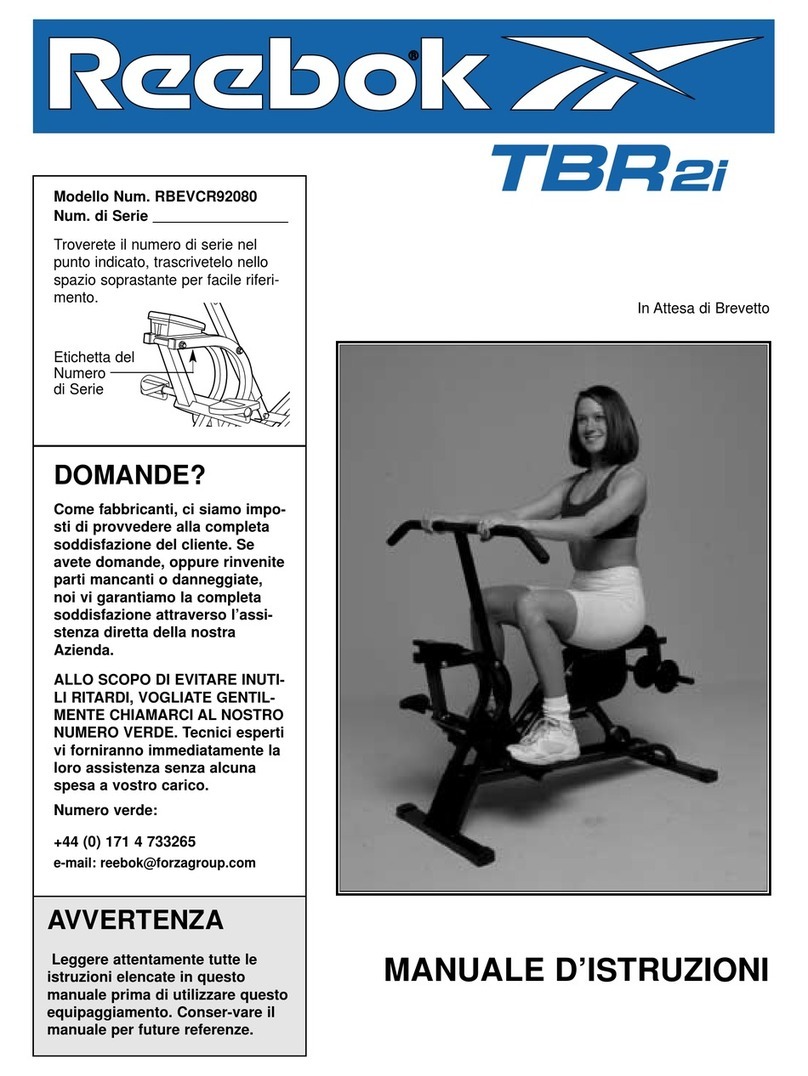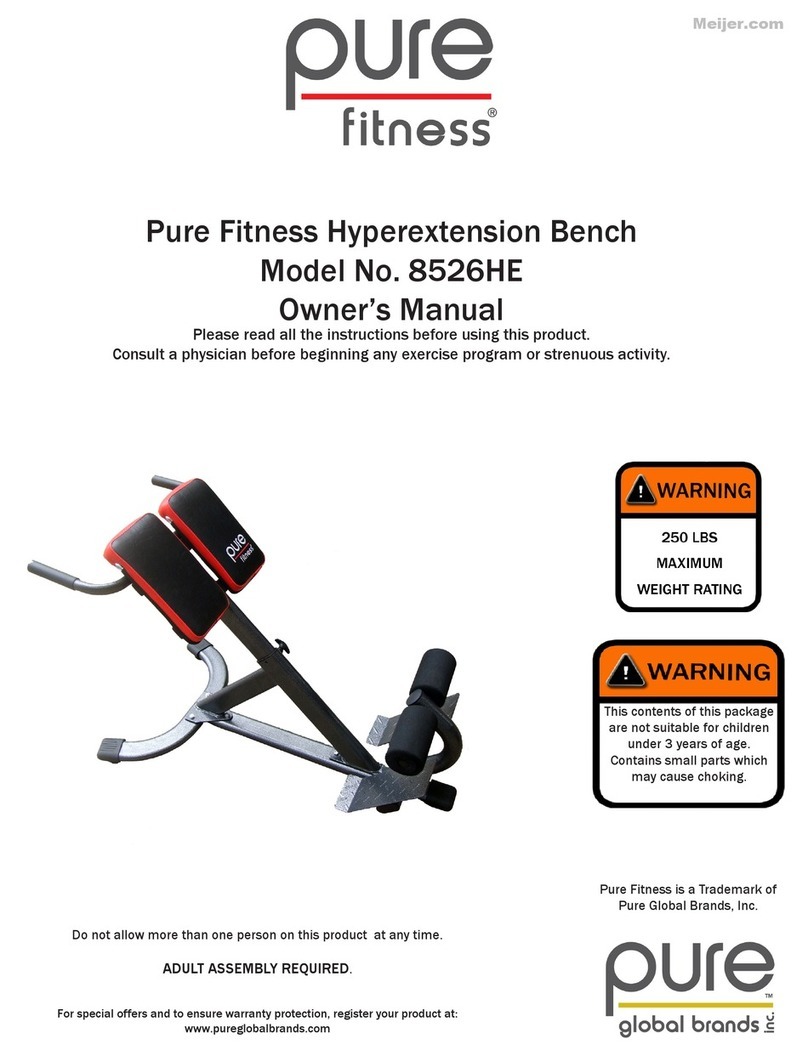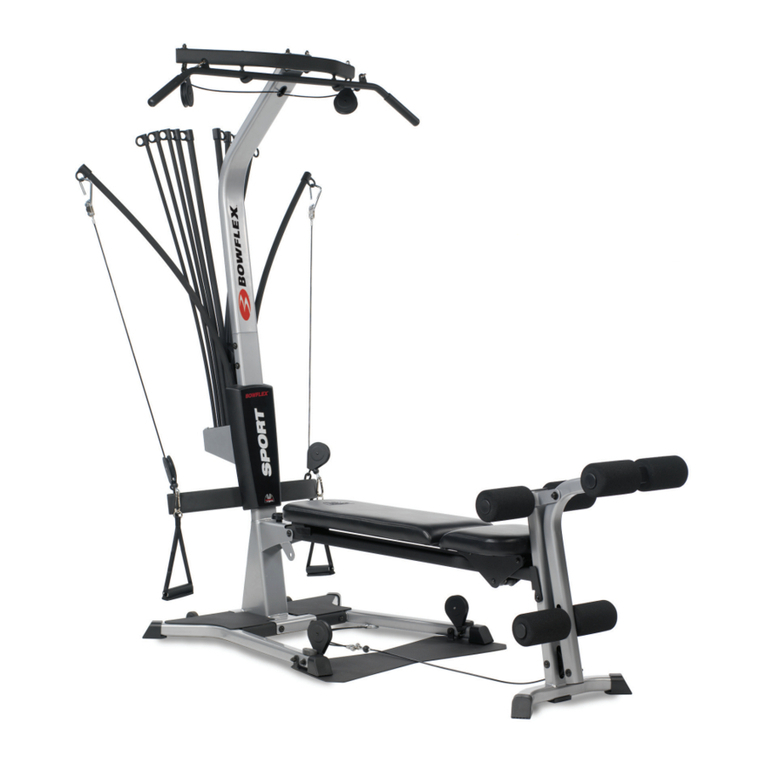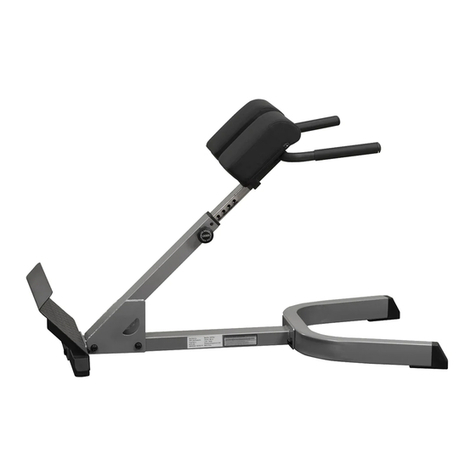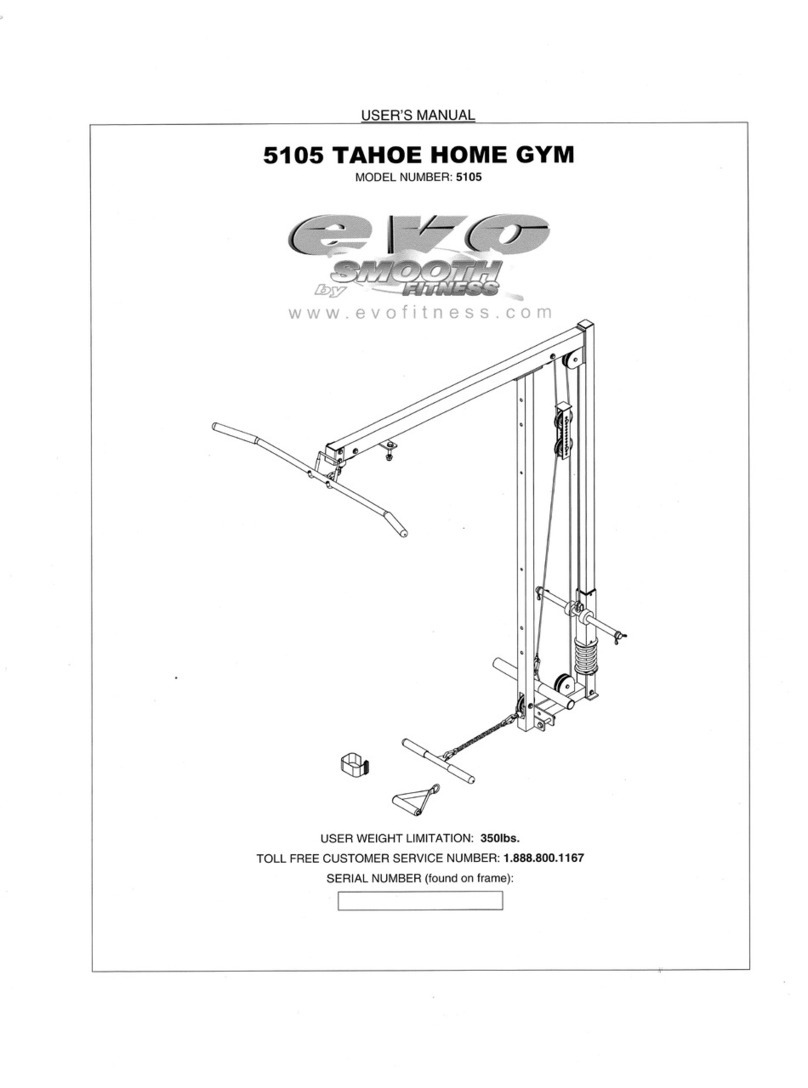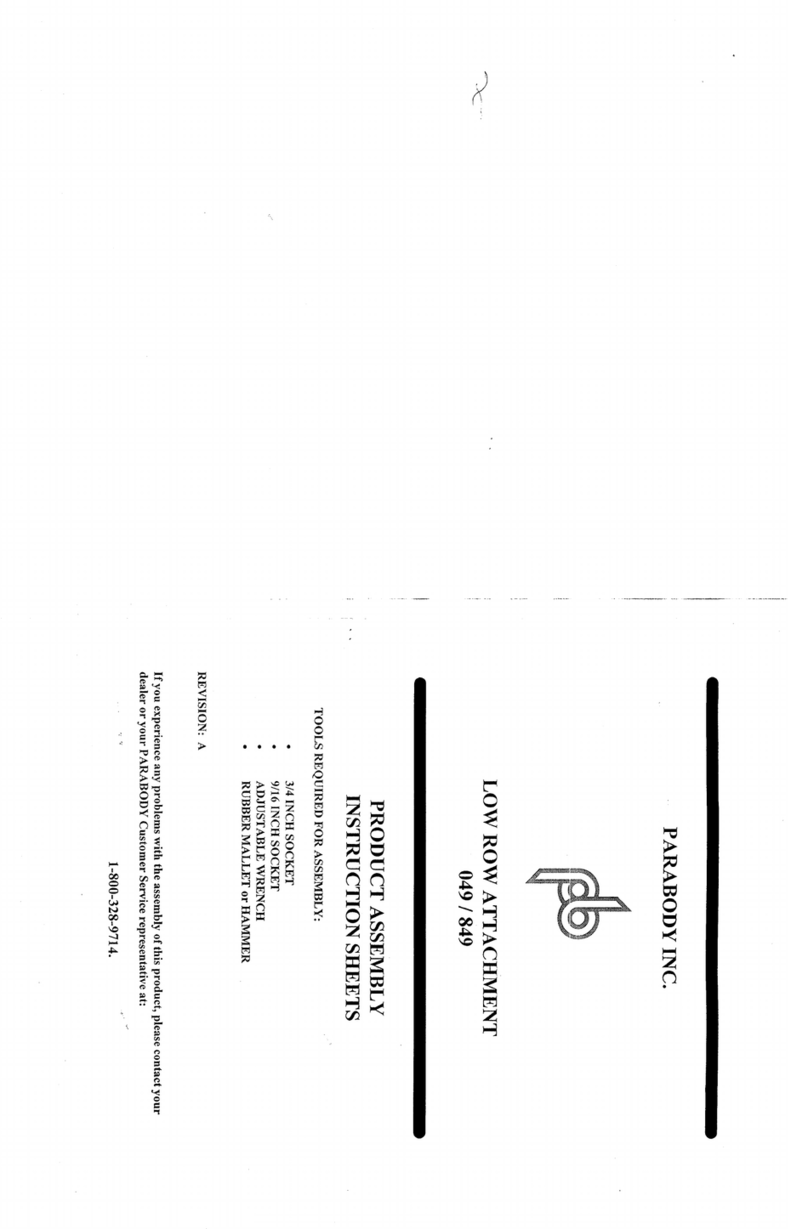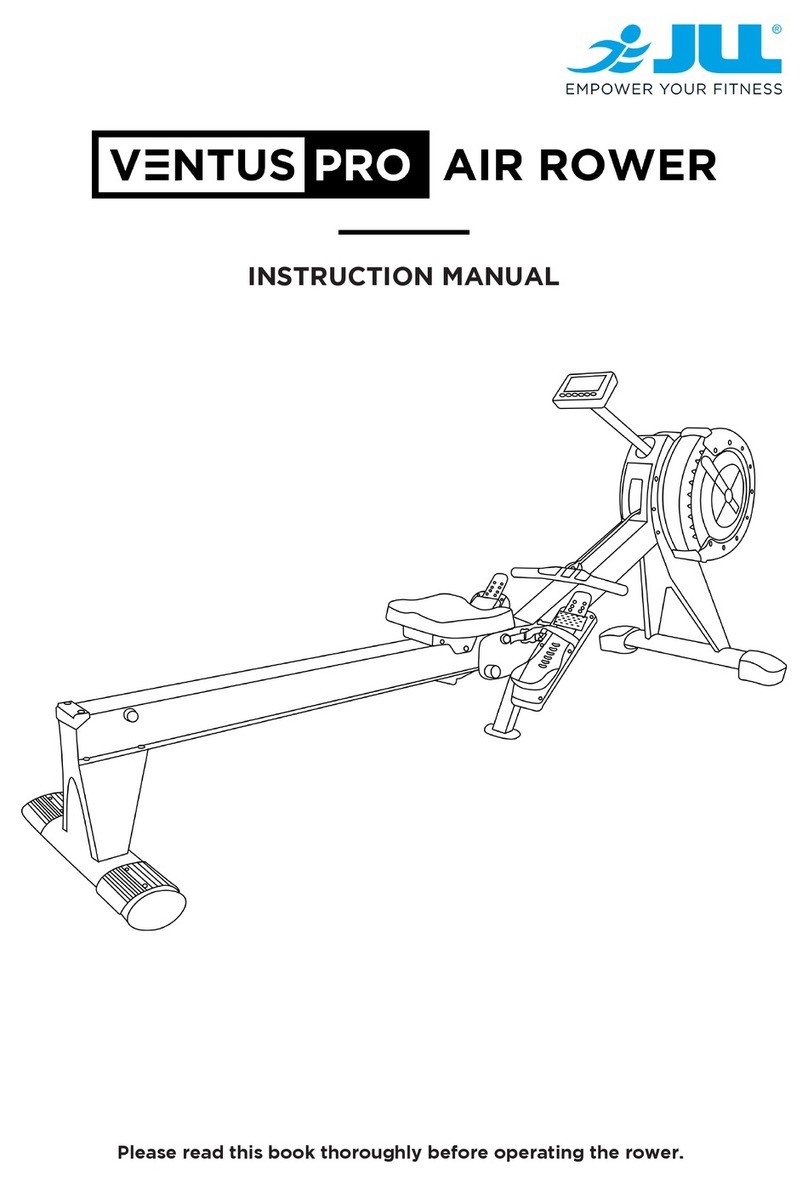EXERCISE GUIDELINES
THE FOUR BASIC TYPES OF WORKOUTS
Muscle Building
To increasethe size and strengthof your muscles,
pushthem close to their maximumcapacity,Yourmus-
cleswill continuallyadapt and grow as you progres-
sively increasethe intensityof yourexercise.You can
adjustthe intensity level of an individualexercise in
twoways:
• by changingthe amountof resistanceused
•by changingthe number ofrepetitionsor sets per-
formed. (A =repetition" is one completecycle of an
exercise, such as one sit-up.A =set"is a series of
repetitions.)
The proper amountof resistancefor each exercise
depends uponthe individualuser.You mustgauge
your limitsand selectthe amount of resistancethat is
rightfor you. Begin with 3 sets of 8 repetitionsfor each
exercise you perform.Rest for 3 minutesafter each
set. When you can complete 3 sets of 12 repetitions
withoutdifficulty,increasethe amountof resistance.
Toning
You can tone your muscles by pushing them to amod-
erate percentage of theircapacity.Select a moderate
amount of resistanceand increase the number of rep-
etitionsin each set. Complete as many sets of 15 to
20 repetitionsas possiblewithout discomfort.Rest for
1 minuteafter each set. Work your musclesby com-
pletingmore sets rather than by usinghigh amountsof
resistance.
Weight Loss
To lose weight, use a low amountof resistance and
increase the number of repetitionsin each sat.
Exercise for 20 to 30 minutes, restingfor a maximum
of 30 seconds between sets.
Cross Training
Cross training is an efficient way to get a complete and
well-baJanced fitness program. An example of a bal-
anced program is:
•Plan strength training workouts on Monday,
Wednesday, and Friday.
•Plan 20 to 30 minutes of aerobic exercise, such as
running on a treadmill or riding on an elliptical or
exercise bike, on Tuesday and Thursday.
•Rest from both strength training and aerobic exercise
for at least one full day each week to give your body
time to regenerate.
The combination of strength training and aerobic exer-
cise will reshape and strengthen your body, plus devel-
op your heart and lungs.
PERSONALIZING YOUR EXERCISE PROGRAM
Determiningthe exact length of time for each workout,
as well as the number of repetitions or sets completed,
is an individual matter. It is important to avoid overdo-
ing it during the first few months of your exercise pro-
gram. You should progress at your own pace and be
sensitive to your body's signals. If you experience pain
or dizziness at any time while exercising, stop immedi-
ately and begin cooling down. Find out what is wrong
before continuing. Remember that adequate rest and a
proper diet are important factors in any exercise pro-
gram.
WARMING UP
Begin each workoutwith 5 to 10 minutesof stretching
and lightexerciseto warm up.Warming up prepares
yourbodyfor more strenuousexercise by increasing
circulation,raising your bodytemperature and deliver-
ingmore oxygento yourmuscles.
WORKING OUT
Each workout should include 6 to 10 different exercis-
es. Select exercises for every major muscle group,
emphasizing areas that you want to develop most. To
give balance and variety to your workouts, vary the
exercises from session to session.
Schedule yourworkoutsfor the time of day when your
energy level is the highest. Each workout should be
followed by at least one day of rest. Once you find the
schedule that is right for you, stick with it.
EXERCISE FORM
Maintaining properform is an essential part of an
effective exercise program. This requiresmoving
throughthe full range of motionfor each exercise,and
movingonlythe appropriateparts of the body.
Exercisingin an uncontrolledmannerwillleave you
feeling exhausted. On the exercise guide accompany-
ing this manual you willfind photographsshowingthe
correctform for several exercises,and a listof the
musclesaffected. Refer to the musclechart on the
next page to findthe names ofthe muscles.
The repetitions in each set should be performed
smoothlyand withoutpausing. The exertion stage of
each repetition should last about half as long as the
return stage. Proper breathing is important. Exhale
during the exertion stage of each repetition and inhale
during the retum stroke. Never hold your breath.
9
